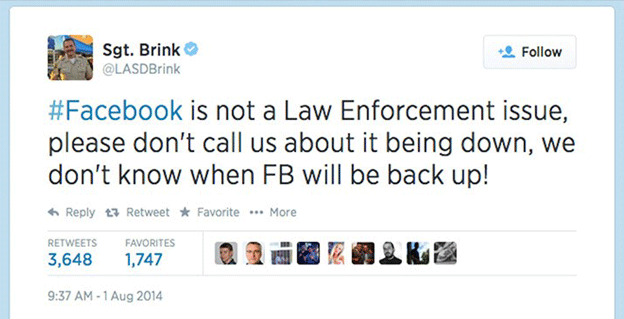
The Art of Saying No
I had a big breakthrough last week! I said no to three separate requests all on the same day. And

I had a big breakthrough last week! I said no to three separate requests all on the same day. And

We all know people who over-apologize. Individuals who take responsibility for everything – even things they didn’t do. Research tells

As a leader, you set the tone for communication in your area. What you do and say is modeled. An email from you carries more weight than those from peers. As such, your email etiquette and behavior can either help your team be more productive or totally trip them up.
Here are three types of emails that a leader should never send. And I do mean never!

I’m not sure how we came to the point where demanding accountability is equated to finding a scapegoat, placing blame, and demanding retribution. The cry for “someone to be held accountable” is code for finding someone to fire or dismiss so that business can go on usual. It has very little to do with what I would define as true accountability.
It’s very easy to spot someone with a high degree of personal accountability by what they do and don’t do…

The notion of telling stories in business is at times a bit suspect – as if telling a story was the same as spreading a falsehood. Or perhaps a bit too frivolous for the “serious” nature of the work we do. Or a bit too theatrical, pushing us well outside our comfort zone.
Doug Stevenson, founder and chief story teller at Story Theater International (and his amazing side-kick and muse, Deborah Merriman) have cracked the code on “strategic storytelling” for business. I had the wonderful opportunity to join three others in a retreat at Doug’s studio recently.
Doug draws heavily on his acting training and Hollywood experience to bring “the magic of storytelling” into a business setting. He breaks down the essential elements of story and teaches how to craft a compelling tale that captures attention and sticks with you for a very long time. Most importantly, he instructs business people in how to make their point using story. For storytelling in business is more than just spinning a good yarn or telling a story to get a few yucks. Much more than that.

Late last year I was able to check off a bucket list item of mine: to do a TED talk. I spoke about the need to shift our worldview from one of striving for stability to one of dealing effectively with continual change, in a talk entitled, “Is Stability What We Should Strive For?”
At the end, I describe some of the characteristics of emerging organizations that are thriving (rather than thrashing) in our global, networked, connected, hyper-fast, technologically driven world. It is an interesting list – and I wonder how your organization stacks up to it.

Of course that sounds silly – but it points to a major shift that has occurred in who and how and how often we connect with others.

Skeptics and cynics share some things – both question, both challenge, both share doubt openly. As such, we tend to cast folks that raise objections, challenge our plans or thinking or ask difficult questions in a negative light. We avoid them. Un-invite them to meetings. Find ways to silence them. Avert eye contact. Roll our eyes. Sigh deeply. Run the other way when we see the coming.
Today, I challenge you to refine your approach. To discern if those that are asking questions are skeptics or cynics. For while both will challenge and question, past that – the similarities wane and diverge in significant ways.

I had a recent conversation with a leader in a large company who made the statement, “It would all be better if only people would just come to work and do their work, and leave their emotions at the door.”
It’s not the first time I’ve heard that sentiment – but this time it really caused me to pause and wonder. Would it really be a better place? Here’s what I think about emotions and work.

Can bystanders add value to a team? Can you detract from a team even though you are leading? Can taking an oppositional stance benefit your team? In today’s post we explore the four different actions you can take on a team – and how they way in which they are expressed makes all the difference in the results you achieve.
Fill out the form to receive the Evergreen Leadership newsletter and be notified about new blogs.